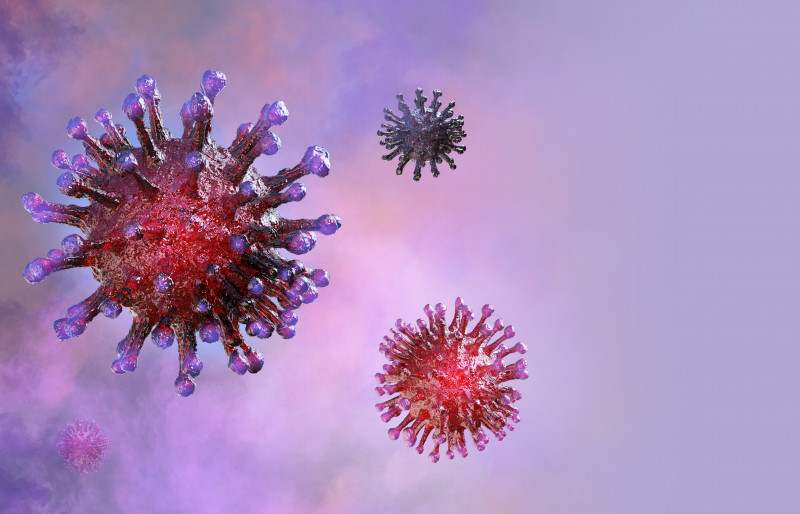Man With Hemophilia A Treated for COVID-19 While on Hemlibra

A 70-year-old man with severe hemophilia A was treated for COVID-19 while receiving prophylactic, or preventive, treatment with Hemlibra (emicizumab) to lower his bleeding risk.
This case underscores the importance of close cooperation between physicians of many specialties and appropriate treatment to avoid blood clots, while maintain blood clotting factors within a normal range, its investigators reported.
“The case presented here is, to our knowledge, the first in the literature documenting successful evolution of severe COVID-19 in a patient with severe haemophilia A on emicizumab prophylaxis,” they wrote.
The case study, “Successful treatment of COVID‐19 in a patient with severe haemophilia A on emicizumab prophylaxis in the intensive care unit,” was published in the journal Haemophilia.
Hemlibra is a bispecific antibody — an antibody that is able to bind to two targets simultaneously — that is designed to mimic the function of clotting factor VIII (FVIII), the blood clotting protein that is missing in people with hemophilia A. The treatment is effective even in patients with FVIII inhibitors, neutralizing antibodies that block the activity of naturally occurring FVIII and the man-made FVIII used to treat hemophilia A.
When used in combination with bypassing agents, Hemlibra has been linked to an increased risk of thrombosis, a condition in which blood vessels become obstructed by blood clots. The treatment can also interfere with tests used to monitor blood clotting.
The frequency of thrombosis as a complication of COVID-19 makes treating the disease a challenge in hemophilia A patients taking Hemlibra.
Researchers in Poland described the case of a 70-year-old man with severe hemophilia A who was successfully treated for COVID-19 while receiving Hemlibra prophylactically.
The patient was diagnosed with hemophilia A at age 5, which was further complicated by the development of FVIII inhibitors at age 50. He underwent immune tolerance induction (ITI), which successfully eliminated FVIII inhibitors, and began prophylactic treatment with FVIII in 2013.
As a part of a clinical trial, he began using Hemlibra in 2017 at an initial weekly dose of 1.5 mg/kg, which was increased to 3 mg/kg due to recurrent bleeding episodes. After starting this treatment, he experienced no bleeds or thrombotic events.
In November 2020, he was admitted to the hospital with a cough, fever, and difficulty breathing, and was diagnosed with COVID-19. Chest X-rays revealed lesions in his lungs.
Blood tests showed signs of severe COVID-19, including a reduction in the number of immune lymphocytes (0.38×103 per microliter (mcl); normal: 1.5–3.5×103/mcl) and elevated levels of the proteins D-dimer (2.65 mcg/mL; normal: less than 0.5 mcg/mL) and ferritin (1,450 mcg/L; normal: 15–400 mcg/L).
As the patient’s respiratory status worsened, he required ventilation and was admitted to the intensive care unit (ICU) where he received a blood thinner (heparin) and was treated with remdesivir, dexamethasone, and convalescent plasma for COVID-19. After two days, the man showed signs of pancreatitis — an inflammation in the pancreas — and was treated with antibiotics.
Ten days into his COVID-19 treatment, he had a sudden spike in inflammation markers, including an increase in C-reactive protein (CRP) levels, from 93.3 to 312.2 mg/L (normal: less than 10 mg/L), and procalcitonin, from 0.07 to 8.55 nanograms per milliliter (ng/mL) (normal: less than 0.15 ng/mL).
Further chest scans also showed a worsening in his lung lesions. The patient’s lung tissue and blood were positive for the bacteria Acinetobacter baumannii and Staphylococcus aureus.
He was then diagnosed with ventilator-associated bacterial pneumonia and secondary sepsis (blood poisoning), and treated with antibiotics. Hemlibra treatment continued at the regular dose, and heparin was increased.
He tested negative for COVID-19 on days 19 and 20, and underwent a tracheostomy — a procedure in which physicians open a small hole in the windpipe to insert a tube to assist with breathing — on day 21.
The patient’s overall condition improved, with CRP, procalcitonin, and D-dimer levels dropping, and his lung lesions partly regressing. He was taken off ventilation by day 30.
Throughout his hospitalization, the man received daily injections of plasma-derived FVIII, maintained blood FVIII levels within a normal range, and experienced no bleeding or thrombotic episodes.
FVIII injections were stopped on day 30, and the patient remains on prophylactic Hemlibra. He was discharged from the hospital and continues physical and respiratory therapy at home.
This case “demonstrates the importance of close cooperation of physicians of many specialties, including a haematologist, anaesthesiologist, radiologists and infectious disease specialist as well as experienced laboratory specialists in the diagnostic and therapeutic process,” the investigators wrote.
“Moreover, close monitoring of coagulation parameters and maintenance of appropriate FVIII levels were crucial in the therapy ensuring optimal [blood clotting],” they added.






